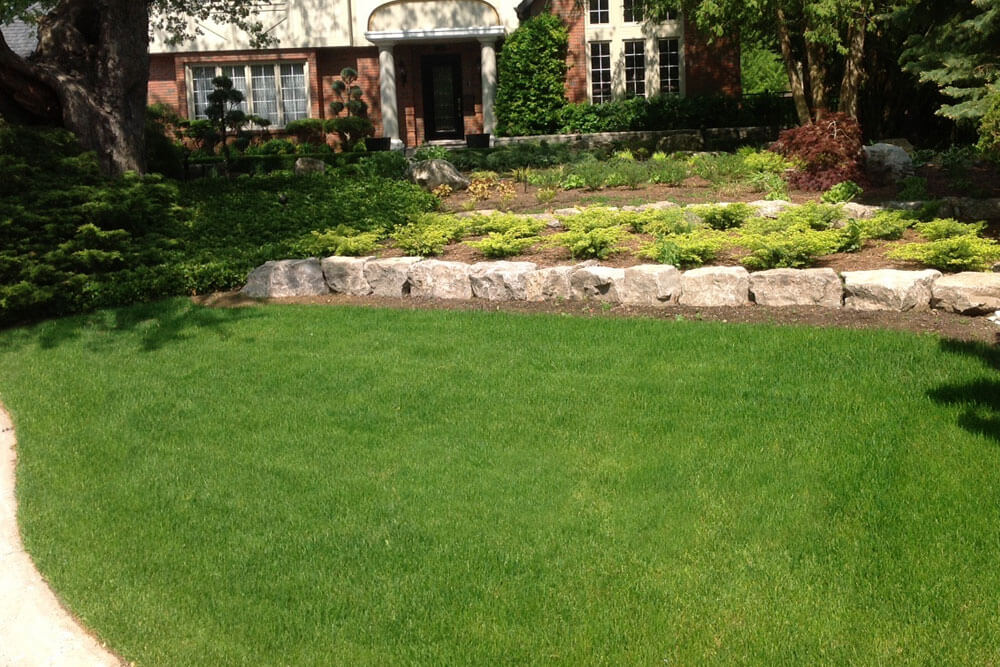Now that the summer season is ready to burst forth, this is a great time to consider aerating and fertilizing your lawn. Basic lawn practices like fertilizing, proper mowing and watering contribute to a beautiful lawn, but aeration can be a vital element to ensure that nutrients reach the soil beneath your grass. By giving your lawn some attention in the late spring, you’ll be rewarded by with a beautiful, lush, healthy lawn in early summer.
As the sod ages over time, the soil beneath the grass can become compacted. This compression prevents air and water from penetrating the lawn to feed it. This compacted lawn thatch makes it difficult for grass roots to absorb the water and nutrients it needs to stay healthy and lush.
Without open spaces for the water and nutrients to get into the soil, the lawn will deteriorate before long, making it more susceptible to weeds, invasion of insects and disease. Aeration can reverse this negative trend on your lawn because it allows air and water to penetrate built-up grass or lawn thatch.
What is Aeration?
In technical terms, aeration is a naturally occurring process that is performed for the exchange of air between the soil and surrounding atmosphere. In simpler terms, aeration involves mechanically perforating the soil and removing small cores (or plugs) of soil to allow air, water and nutrients to penetrate the root zone of the grass. This process allows the roots to grow more deeply to produce a stronger and more vigorous lawn. The plugs of soil are deposited to the surface where they will work their way back into the soil over the course of a month. In the lawn care industry, this procedure is also called core aeration, soil cultivation, coring, spiking or slicing.
When You Should Aerate
The best time to aerate is during the growing season in early summer or early autumn, when the lawn is growing most actively. These times are best because the grass can easily heal by filling in any open areas after the plugs have been removed. Ideally, you should aerate the lawn with a cool season grass selection in the early spring or fall and warm season grass in the late spring.
Aeration Equipment
There are two different basic types of aeration equipment that will determine the effectiveness of the treatment, a spike aerator and a plug aerator. A spike aerator is simply poking holes into the ground while a plug aerator removes a core of grass and soil. Most turfs will respond optimally when the core hole perforations are made close and deep, such as 2-3 inches deep and 0.5-0.5 inches in diameter with 2-3 inches apart. Aeration equipment with hollow tines removes soil cores while other types open tines and divots the soil surface. The equipment also varies in tine size up to ¾ inch diameter and in depth of penetration up to 4 inches, depending on the manufacturer’s specifications.
Fertilize
The consensus of most experts is that early fall is the best time of the year to fertilize your lawn. The reason behind this thinking is that grass grows more slowly as the temperature cools down, but the roots of the grass continue to steadily grow; however, spring is equally good as the start-up occurs and temperatures are still cooler.
In the fall, the horizontal plant stems called rhizomes lie just beneath the soil’s surface. These plant stems are what produce the blades of grass. By fertilizing in fall, you will be delivering essential nutrients on reserve to help them mature and become healthy and sturdy for next spring.
Make It Beautiful
Aerating and fertilizing your lawn is a practical and beneficial practice for achieving a beautiful lawn. It is an integral part of your lawn care regime such as proper fertilizing, mowing and watering.


